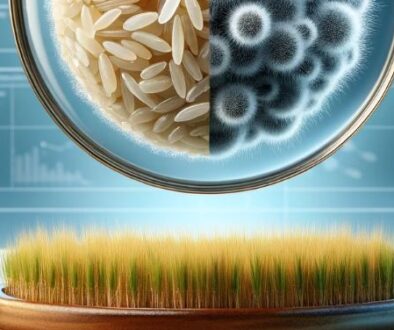Bioactive Peptides: Unveiling their Potential in Health and Disease Management
Explore the health benefits of rice-derived bioactive peptides in managing hypertension, offering natural antioxidant and antihypertensive solutions with scientific insights.
Key words: rice peptide, ACE inhibitory activity, antihypertensive effect, Caco-2 cell
Introduction
Bioactive peptides, also known as functional peptides, play a pivotal role in promoting health and preventing diseases. Their physiological functions span across antimicrobial, immune-modulating, antioxidant activities, and more. Derived either naturally within organisms or through enzymatic hydrolysis of proteins, these peptides are a rich source of therapeutic agents.
Sources of Bioactive Peptides
Bioactive peptides are obtained from natural proteins found in both animals and plants, such as dairy products, animal feed proteins, and soy proteins. The process involves enzymatic hydrolysis, leading to the production of peptides and amino acids, with enzymatic methods being preferred due to higher yield and purity.
Functionalities of Bioactive Peptides
Antihypertensive Activity
Angiotensin-I converting enzyme (ACE) plays a crucial role in blood pressure regulation. Bioactive peptides inhibit ACE activity, thus preventing the conversion of angiotensin I to angiotensin II, a potent vasoconstrictor, thereby reducing blood pressure. Natural ACE-inhibitory peptides have been isolated from various food proteins, indicating their potential in hypertension management.
Antioxidant Activity
Given the health risks associated with synthetic antioxidants, there is a growing interest in natural antioxidants. Bioactive peptides from marine proteins and plants have shown significant antioxidant properties, offering a safer alternative for food preservation and health.
Other Activities
Bioactive peptides also exhibit a range of other health-beneficial activities, including antimicrobial, anti-HIV, antithrombotic, and anticancer effects, making them valuable for functional foods, supplements, and pharmaceuticals.
Absorption Characteristics of Bioactive Peptides
Peptides are primarily absorbed through the gastrointestinal tract, involving active and passive transport mechanisms. The absorption efficiency is influenced by the peptides’ molecular size, composition, and the presence of specific transporters.
ACE-Inhibitory Peptides
Mechanism of Action in Blood Pressure Regulation
The renin-angiotensin system (RAS) and the kallikrein-kinin system (KKS) are key regulators of blood pressure. ACE-inhibitory peptides reduce blood pressure by inhibiting the conversion of angiotensin I to angiotensin II and by affecting the kallikrein-kinin system, highlighting their potential as natural antihypertensive agents.
Structure-Activity Relationship
The biological activity of ACE-inhibitory peptides is closely related to their molecular weight, amino acid composition, and sequence. Peptides with a high content of hydrophobic amino acids show higher ACE inhibitory activity, with certain amino acids at the C-terminal being crucial for binding to ACE.
Evaluation Methods for ACE-Inhibitory Activity
ACE inhibitory activity is commonly assessed using in vitro and in vivo methods, with the IC50 value being a key indicator of inhibitory strength. Various analytical techniques, including spectrophotometry and high-performance liquid chromatography (HPLC), are employed for this purpose.
Progress in Rice ACE-Inhibitory Peptides Research
International Advances
Research in countries like the USA and Japan has led to the development of functional rice bran products and ACE-inhibitory peptides, with several products already on the market.
Domestic Advances
In China, research on rice-derived peptides has rapidly progressed, identifying multiple active peptides from rice protein, rice bran, and rice dregs. However, more extensive animal studies and long-term trials are needed to fully understand the peptides’ antihypertensive mechanisms and bioavailability.
Absorption of Antihypertensive Peptides in the Small Intestine
The Caco-2 cell model is commonly used to study the absorption and transport mechanisms of nutrients and drugs across the intestinal barrier. The absorption of peptides involves multiple pathways, including paracellular transport and active carrier-mediated transport, highlighting the complexity of their bioavailability.
Research Background and Content
With rice being a staple food for billions globally, exploring rice-derived bioactive peptides offers promising health benefits, especially in the context of managing hypertension, a prevalent chronic health condition. The study focuses on understanding the molecular characteristics, bioactivity, and absorption mechanisms of rice peptides, contributing valuable insights into their therapeutic potential.
For more further detailed information of this research, feel free to contact our team for asssistance.
The original research is done by WANG Shen,GONG Zhiyong(School of Food Science And Engineering, Wuhan Polytechnic University, Wuhan,430023, China) The ariticle ID is: doi: CNKI:CDMD:2.1015.537891












